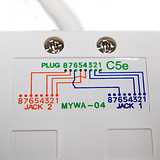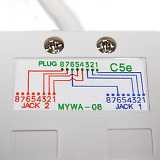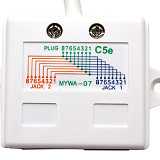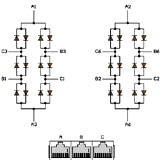36
13
I thought the Ethernet is logically a one-line communication bus (for argument's sake, I am excluding hubs). All machines attached on the bus hears the same signals and the machines themselves try to avoid collisions by randomly backing off.
http://computer.howstuffworks.com/ethernet6.htm
If so, why would splitting one Ethernet line from my home router into two and connecting two computers not work? Why do I have to add a switch to it?
What the Internet said would not work.
+----------+
+---------->|computer 1|
| +----------+
+------------------+ +---------------+
|4 port home router+------>|simple splitter|
+------------------+ +---------------+
| +----------+
+---------->|computer 2|
+----------+
What the Internet said I should do
+----------+
+---------->|computer 1|
| +----------+
+------------------+ +---------------+
|4 port home router+------>| switch |
+------------------+ +---------------+
| +----------+
+---------->|computer 2|
+----------+
Is this because of the signal degradation (reduced electric current)?
Thank you for all the answers! The reason why I did not just use the two ports of my home router is...
The 4-port gigabit router is in my room, and I had put a computer in another room (also my room, though). Since a wired network is far more reliable and secure, I had bought a long Ethernet cable and and connected the computer to the router. Now I was thinking about adding another computer to that room. I could buy another long Ethernet cable, but then there will be two cables between the rooms. The one line already is a minor annoyance, so I thought if I could share the one line between the two computers in that room. A switch would work, but it requires power and is a little bit pricey. That is why I wondered why it would not work to simply split the physical Ethernet cable.
Apparently I do not completely understand how Ethernet and a switch work. I just have some bit of knowledge I heard in my college class.




The key is you need a splitter at each end using two ports of your router. Then everything works fine assuming you're not trying to use 1000BASE-T. – OrangeDog – 2019-07-29T15:15:26.610
7If you understand that ethernet is one-line communication, and you understand how a Switch works, I don't understand your question. If you split an Ethernet cable it no longer would result in one-line communicaton because two devices would be on the exact same line. You understand how a switch right? – Ramhound – 2014-06-06T17:49:46.783
You can do with your 4 ports router and two cables. You don't need a switch, because what you call router is actually a router+4ports_switch+(in some cases)modem. To put it differently, if your router has more than one exit port, it also has some switch capabilities. – Bruno9779 – 2014-06-06T17:54:25.667
2Actually, it does work, sorta, sometimes. Only not very reliably and the transmitters are operated outside of their parameters. Plus you can't communicate with your "twin", only the other end, because the transmitted data will not be reflected back up your (shared) cable. – Daniel R Hicks – 2014-06-06T18:59:48.553
I don't see why you just don't lay down two cables if you don't want another hub: [4 port home router] =========================== [two Ethernet cable]======[two computers] – RoboKaren – 2014-06-07T05:55:33.853
2Ethernet has been reinvented a few times. Only the first version was based on a single bus that all computers are connected to. – user253751 – 2014-06-07T08:09:23.443
I've answered similar questions about non-spec cabling before, with a "Yes, of course there are anecdotes about how someone's uncle wired up the back 40 running ethernet over the barbed wire fence"; Duplicating such results, however, are rare. – Nevin Williams – 2014-06-09T23:22:45.297